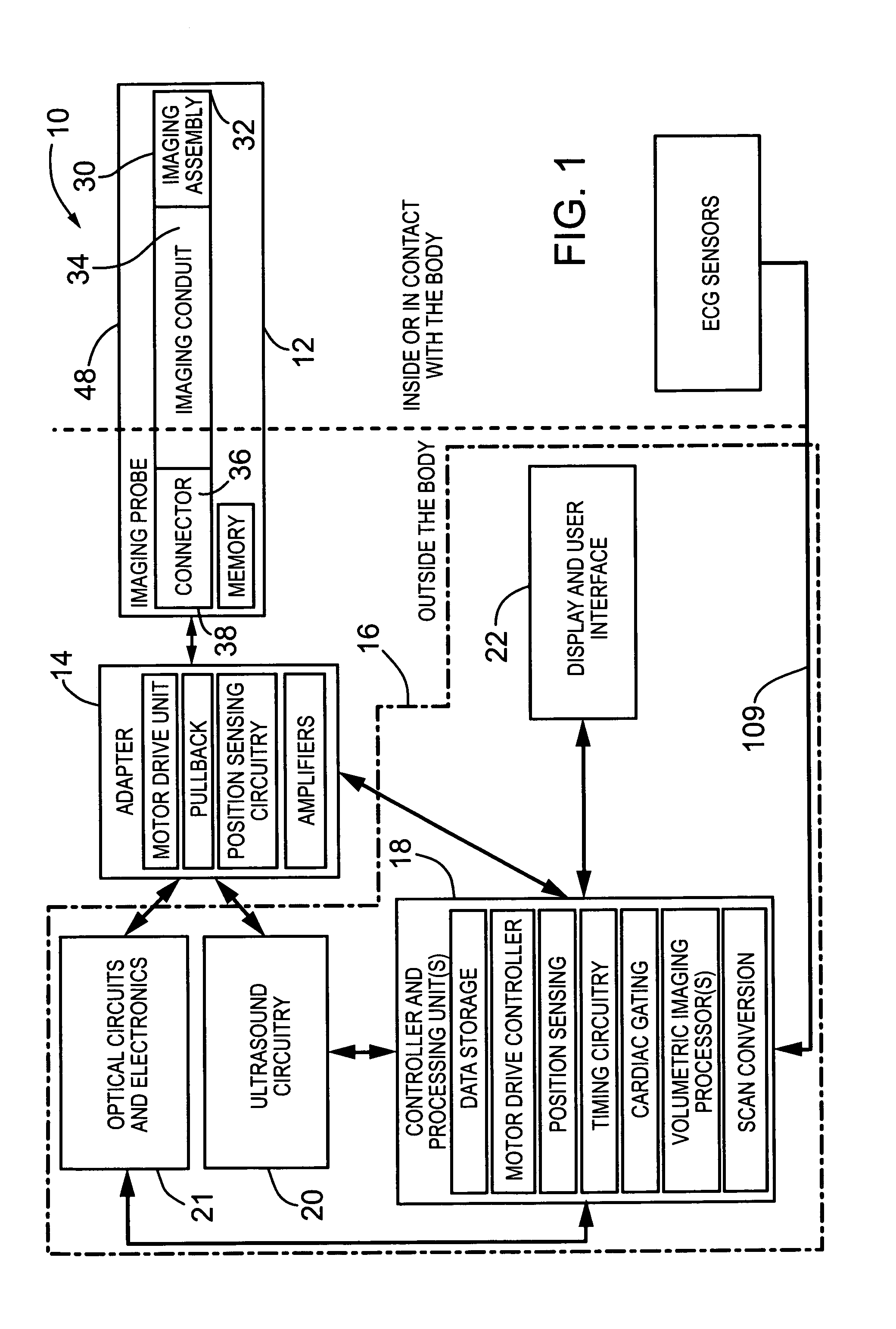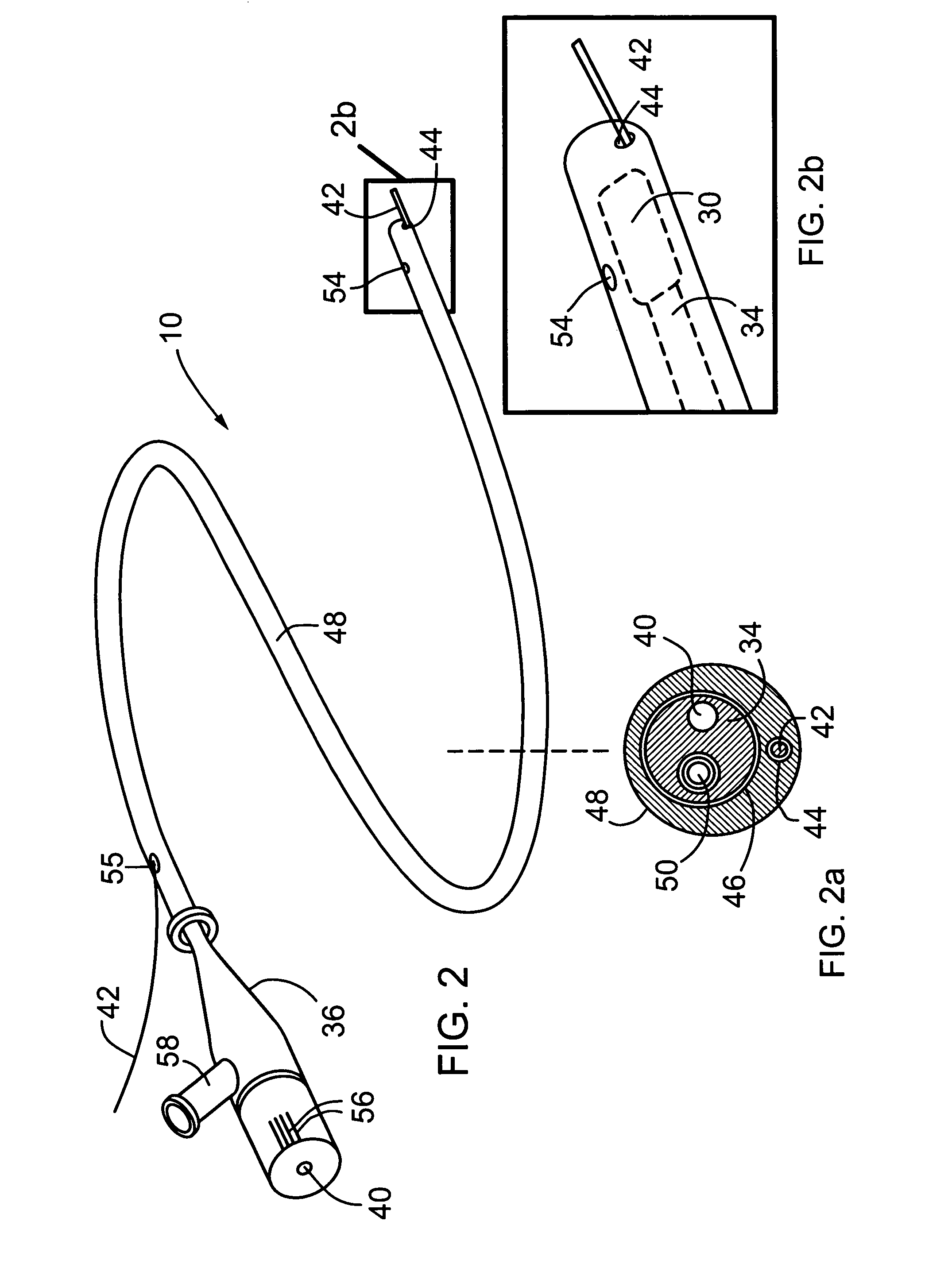Scanning mechanisms for imaging probe
a scanning mechanism and imaging probe technology, applied in the field of imaging probes, can solve the problems of less signal penetration and thus a smaller field of view, limited optical coherence tomography, and the majority of such media are not optically transparent, and achieve the effect of high resolution
- Summary
- Abstract
- Description
- Claims
- Application Information
AI Technical Summary
Problems solved by technology
Method used
Image
Examples
embodiment 340
[0193]FIG. 8a shows an embodiment of an imaging assembly 340 near the distal end of an imaging conduit 342 where the deformable component 344 is associated with an elastic support member 346. The mechanical properties of a deformable component, such as an optical fiber 348 when the imaging sensor is an optical based system, are such that they may not tend to sufficiently restore the fiber 348 to a resting configuration such as a straight configuration. Therefore, the use of an elastic support member 346, such as a length of nitinol wire can be associated with the distal region of the deformable component to improve the performance of embodiments that contain a deformable component 346. FIG. 8b shows an axial cross-section of the embodiment 340 that contains elastic support member 346. The deformable component 344 can be used to facilitate either optical or acoustic imaging or both.
[0194]Additionally, optional flush port 356 in sheath 352 of the imaging conduit 342 of imaging probe 3...
embodiment 260
[0262]FIG. 22c shows an alternative embodiment 260 of the probe seen in FIG. 22a wherein a light deflection element, such as a mirror or prism 234, is incorporated as one of the optional distal optics components 215 of the imaging angle encoder circuit (see FIG. 21a). If a prism is used as the light deflection element, one or more of the surfaces of the prism may be coated with a reflective coating. The use of a light deflection element, such as prism 234, can allow the light used for detection of the imaging angle to approach the encoder interface 204 with a preferred general angle of incidence to allow for improved performance of the imaging angle encoder.
embodiment 270
[0263]FIG. 22d shows an alternative embodiment 270 of the probe seen in FIG. 22c, wherein a lens 235 is included as one of the optional distal optics components 215 of the imaging angle encoder circuit (see FIG. 21a). The use of a lens can be used to change the sensitivity of the imaging angle encoder circuit. For example, if the encoder interface 204 in imaging probe 270 comprises a reflective surface 236 on tiltable component 70, then the amount of light detected that is back-reflected from the reflective surface 236 would be dependent on both the imaging angle and how strongly focused the light emitted from fiber optic 213 is. FIG. 22e shows an exemplary plot of the intensity of light that would be detected as a function of angle of deflection without the use of a lens 235. FIG. 22f shows a comparison plot of how the intensity of light detected would be more sensitive to slight changes in the angle of deflection or tilt as a result of adding a focusing element to the distal end o...
PUM
 Login to View More
Login to View More Abstract
Description
Claims
Application Information
 Login to View More
Login to View More - R&D
- Intellectual Property
- Life Sciences
- Materials
- Tech Scout
- Unparalleled Data Quality
- Higher Quality Content
- 60% Fewer Hallucinations
Browse by: Latest US Patents, China's latest patents, Technical Efficacy Thesaurus, Application Domain, Technology Topic, Popular Technical Reports.
© 2025 PatSnap. All rights reserved.Legal|Privacy policy|Modern Slavery Act Transparency Statement|Sitemap|About US| Contact US: help@patsnap.com



